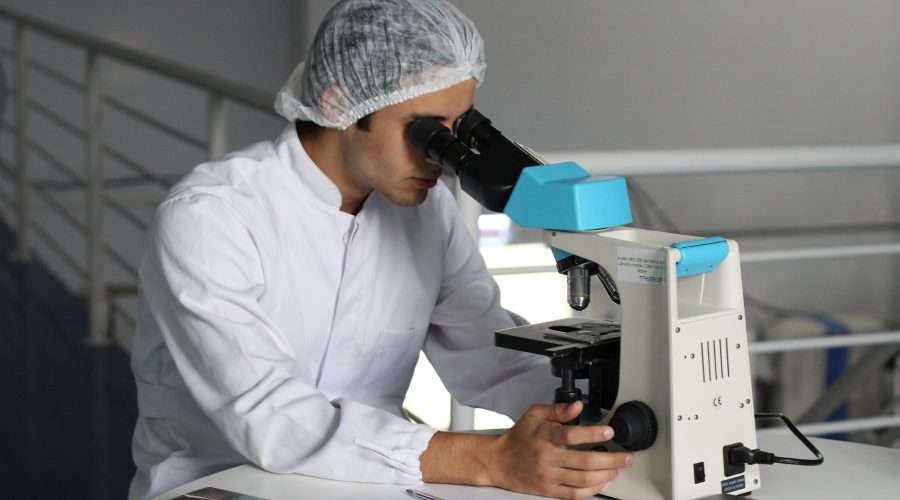Amyotrophic Lateral Sclerosis (ALS), often referred to as Lou Gehrig’s disease, is a debilitating neurodegenerative disorder that affects motor neurons in the brain and spinal cord. ALS leads to progressive muscle weakness, paralysis, and, ultimately, death.
Despite extensive research efforts, there is currently no cure for ALS, making it a challenging and devastating condition for patients and their families. However, recent advancements in ALS research have shed light on promising avenues of investigation, mainly using Mesenchymal Stem Cells (MSCs) and biomarkers.
Stem cells have emerged as a critical tool in the quest to understand the causes of ALS and develop innovative treatments. Among the various types of stem cells, Mesenchymal Stem Cells (MSCs) have garnered significant attention in ALS research due to their unique properties.
Advantages and Limitations of MSC in Biomarker Identification
Advantages:
- Multilineage Differentiation: MSCs possess the remarkable ability to differentiate into various cell types, including neurons, which is crucial for stem cell research ALS. This multilineage differentiation potential allows researchers to study different aspects of the disease and its impact on different cell types.
- Immunomodulatory Properties: MSCs exhibit immunomodulatory properties, which can help regulate the inflammatory responses associated with ALS. This immunomodulation may provide a potential avenue for therapeutic intervention.
- Safety and Tolerance: MSCs are known for their safety and low risk of rejection when transplanted, making them a viable candidate for stem cell research ALS and stem cell-based therapies in ALS.
Limitations:
- Differentiation Challenges: While MSCs can differentiate into neurons, the efficiency of this process can vary, posing challenges in generating a sufficient number of functional neurons for research and treatment purposes.
- Limited Survival: Once transplanted into the body, MSCs may have a limited survival period, affecting their long-term therapeutic efficacy.
Research Findings and Outcomes
Recent research highlights MSCs’ potential in ALS. Induced Pluripotent Stem Cells (iPSCs), derived from adult skin cells, are vital for ALS studies, disease modeling, and drug screening.
iPSCs produce motor neurons, which are crucial for studying ALS and therapy development. Genetically modifying these neurons with fluorescent markers enables real-time monitoring. iPSCs capture individual genetics, creating personalized disease models. Comparing motor neurons from diverse ALS patients advances the understanding of ALS heterogeneity.
Furthermore, stem cell research holds immense potential for treating ALS. Stem cell transplants, especially those involving healthy astrocytes, could provide growth factors and support to motor neurons in the brain and spinal cord. Clinical trials exploring these approaches are ongoing, and preliminary results suggest safety and potential therapeutic benefits.
Future Directions and Potential of MSCs and Biomarkers for ALS
The identification of biomarkers for ALS has gained momentum in recent years. Biomarkers are crucial in diagnosis, disease monitoring, and evaluation of treatment responses. One such promising biomarker is the UNC-13A gene, which has shown a potential link to treatment response in ALS.
Genetic data from ALS trials suggests that some individuals with the UNC-13A gene respond better to treatments like NurOwn, a stem cell therapy delivering neurotrophic factors and cytokines to damaged cells in ALS. While preliminary, this underscores the importance of genetic profiling in tailoring ALS treatment.
To advance ALS research, we must collect peripheral blood mononuclear cells (PBMCs) from participants. These can be transformed into motor neurons using stem cell tech, studying treatment effects on motor neurons from diverse genetic profiles. It informs future trials and identifies responsive subpopulations.
Despite PBMC conversion costs, ongoing tech advancements should reduce expenses, making this approach more cost-effective. ALS’s heterogeneous nature highlights the need to stratify patients by genotype and explore innovative trial designs.
Conclusion
In conclusion, stem cell research and identifying biomarkers for ALS represent promising avenues to understand and treat this devastating disease. MSCs, particularly iPSCs, offer valuable tools for modeling ALS, studying its mechanisms, and screening potential therapies.
As these treatments and research strategies advance, it is crucial to stay informed and support ongoing research efforts. If you or a loved one is affected by ALS, consider exploring clinical trials and treatment options. Swiss Medica Clinic is one such facility that offers innovative stem cell therapies for ALS and other conditions. With these therapies, most symptoms of withdrawal syndrome are avoided or significantly diminished, providing hope and relief to ALS patients.
By continuing to invest in stem cell research and biomarker identification, we can work towards a future where ALS is not only better understood but also effectively treated, improving the quality of life for those affected by this challenging disease. Together, we can advance the search for biomarkers for ALS and further unlock the potential of stem cell research in the fight against ALS.
For more news click thebritaintimes.co.uk
